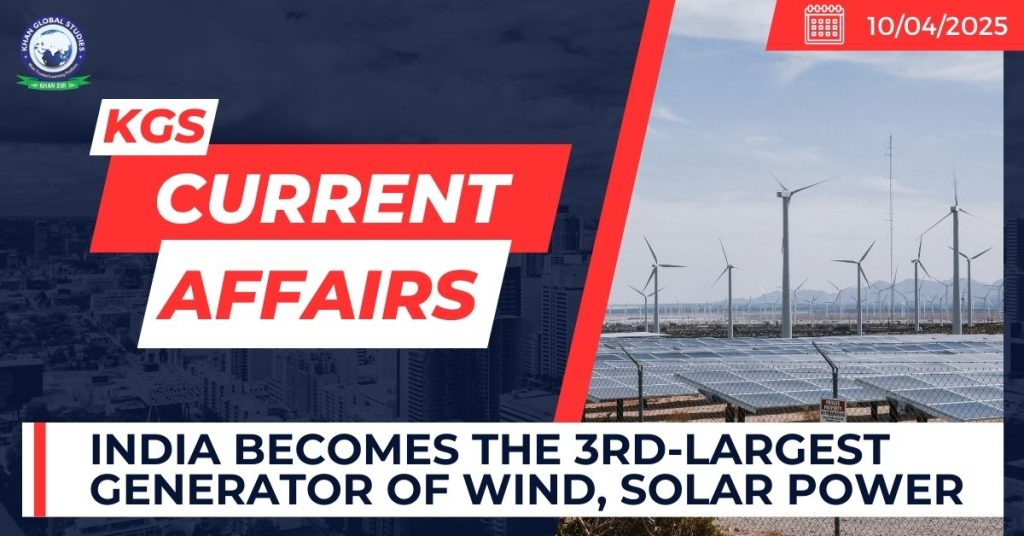Context:
The 6th edition of Ember’s Global Electricity Review 2025 revealed that India became the world’s third-largest producer of electricity from wind and solar energy in 2024.
More on the News
- As per the report India overtook Germany to reach to the 3rd spot.
- The report provides the first comprehensive overview of changes in global electricity generation in 2024.
- The report analyses electricity data from 215 countries, 13 geographic and economic groupings, including Africa, Asia, the EU and the G7,
Key highlights of the Report
Global Renewable Energy growth:
- Wind and solar together generated 15% of global electricity last year, out of which India’s contribution stood at 10%.
- Low-carbon sources including renewables and nuclear contributed 40.9% to global electricity generation in 2024. This is the first time the 40% mark has been crossed since the 1940s.
- Renewables provided a record 32% of global electricity in 2024.
- Globally, renewables contributed a record 858 TWh in 2024, which is 49% more than the previous record in 2022.
- Solar was the largest source of new electricity for the third straight year, adding 474 TWh in 2024.
India’s renewable energy view
In India, clean sources accounted for 22% of the electricity generation. Of this, hydropower was the largest contributor at 8%, followed by wind and solar, which together contributed 10%.
India added 24 gigawatts (GW) of solar capacity in 2024, which is more than double the previous year’s addition, making it the third-largest market after China and the United States.
- Solar energy contributed 7% of India’s total electricity in 2024, with generation having doubled since 2021.
India became fourth globally in solar generation with an increase in additional 20-terawatt hours (TWh) in 2024.
The report also stressed India’s need to accelerate clean generation to match rising demand.
India’s Renewable Energy Initiatives
- National Climate Targets: Under India’s climate commitments or Nationally Determined Contributions (NDCs) submitted to the UNFCCC in 2022, India’s climate targets include achieving 50% of installed capacity from non-fossil sources and reaching 500 GW of non-fossil capacity by 2030.
- PM Surya Ghar: Muft Bijli Yojana (PMSGMBY): Launched in February 2024, this initiative has become the world’s largest domestic rooftop solar programme. As of March 10, 2025, it has powered 10 lakh households with solar energy.
- The Union Budget 2024–25 earmarked ₹10,000 crore for solar grid infrastructure, marking a 110% increase from the ₹4,757 crore allocated in the previous fiscal year (2023–24).

